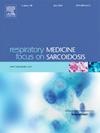Component-resolved diagnostics study on nut sensitization and cross-reactivity in China
IF 3.1
3区 医学
Q2 CARDIAC & CARDIOVASCULAR SYSTEMS
引用次数: 0
Abstract
Purpose
Nut sensitization in China remains insufficiently characterized. Component-resolved diagnosis (CRD) technology offers the ability to distinguish true food allergies from pollen-induced cross-sensitizations while avoiding the risks of oral food challenge (OFC) tests. This study aims to explore and validate the major allergenic components and patterns of cross-reactivity between nuts and pollens in patients with pollen-food allergy syndrome (PFAS).
Methods
This study evaluated the sensitization profiles of 104 patients with self-reported PFAS, focusing on crude extracts and major allergenic components of pollen and nuts. In addition, the presence of cross-reactive carbohydrate determinants (CCDs) was tested to determine if the specific immunoglobulin E (sIgE) detection of these plant allergens was influenced by non-specific reactions causing false positives. Furthermore, we conducted serum inhibition assays to explore the cross-reactivity between pollen and nut allergens.
Results
The majority of PFAS patients were from northern China, where sensitization to weed pollen, particularly mugwort, was more prevalent than to tree pollen or grass pollens. Hazelnut and walnut were identified as the most frequently sensitizing nut allergens, whereas sensitization rates to other nuts were markedly lower. CRD combined with serum inhibition assays demonstrated a common cross-sensitization between pollen and nut allergens. Notably, the hazelnut component Cor a 1-sIgE was significantly inhibited by birch pollen and its component Bet v 1, while Cor a 8-sIgE showed effective inhibition by mugwort pollen and its component Art v 3.
Conclusions
This is the first study to comprehensively evaluate nut sensitization and its key allergenic components in Chinese PFAS patients, confirming substantial cross-sensitization with pollen allergens. Specifically, birch and mugwort pollen significantly inhibited IgE binding to hazelnut. These findings provide component-resolved insights into the prevalence and mechanisms of nut allergies in China, enhancing our understanding of the allergenic landscape and informing clinical diagnosis and management strategies.

中国坚果致敏性和交叉反应性成分分辨诊断研究。
目的:坚果致敏在中国的研究还不够充分。成分分解诊断(CRD)技术提供了区分真正的食物过敏和花粉引起的交叉致敏的能力,同时避免了口服食物挑战(OFC)测试的风险。本研究旨在探讨和验证花粉食物过敏综合征(PFAS)患者坚果和花粉之间的主要致敏成分和交叉反应模式。方法:本研究评估了104例自我报告的PFAS患者对花粉和坚果的粗提取物和主要致敏成分的致敏性。此外,还测试了交叉反应性碳水化合物决定因子(CCDs)的存在,以确定这些植物过敏原的特异性免疫球蛋白E (sIgE)检测是否受到导致假阳性的非特异性反应的影响。此外,我们进行了血清抑制试验,以探索花粉和坚果过敏原之间的交叉反应性。结果:大多数PFAS患者来自中国北方,那里对杂草花粉,特别是艾草花粉的敏感程度高于对树花粉或草花粉的敏感程度。榛子和核桃被确定为最常见的致敏坚果过敏原,而对其他坚果的致敏率明显较低。CRD结合血清抑制试验表明花粉和坚果过敏原之间存在常见的交叉致敏。值得注意的是,榛子成分Cor a 1- sige受到桦树花粉及其成分Bet v1的显著抑制,而Cor a 8-sIgE受到艾蒿花粉及其成分Art v1的有效抑制。结论:本研究首次对中国PFAS患者的坚果致敏性及其关键致敏成分进行了综合评价,证实了与花粉过敏原的交叉致敏。其中,桦树和艾草花粉显著抑制了榛子与IgE的结合。这些发现为中国食物过敏的患病率和机制提供了成分解析的见解,增强了我们对过敏原景观的理解,并为临床诊断和管理策略提供了信息。
本文章由计算机程序翻译,如有差异,请以英文原文为准。
求助全文
约1分钟内获得全文
求助全文
来源期刊

Respiratory medicine
医学-呼吸系统
CiteScore
7.50
自引率
0.00%
发文量
199
审稿时长
38 days
期刊介绍:
Respiratory Medicine is an internationally-renowned journal devoted to the rapid publication of clinically-relevant respiratory medicine research. It combines cutting-edge original research with state-of-the-art reviews dealing with all aspects of respiratory diseases and therapeutic interventions. Topics include adult and paediatric medicine, epidemiology, immunology and cell biology, physiology, occupational disorders, and the role of allergens and pollutants.
Respiratory Medicine is increasingly the journal of choice for publication of phased trial work, commenting on effectiveness, dosage and methods of action.
 求助内容:
求助内容: 应助结果提醒方式:
应助结果提醒方式:


